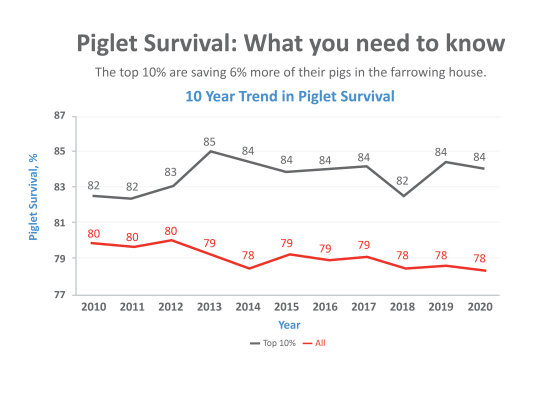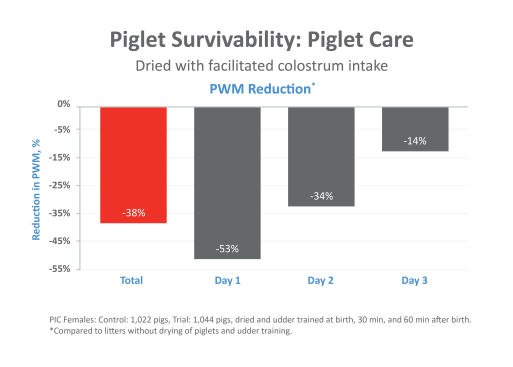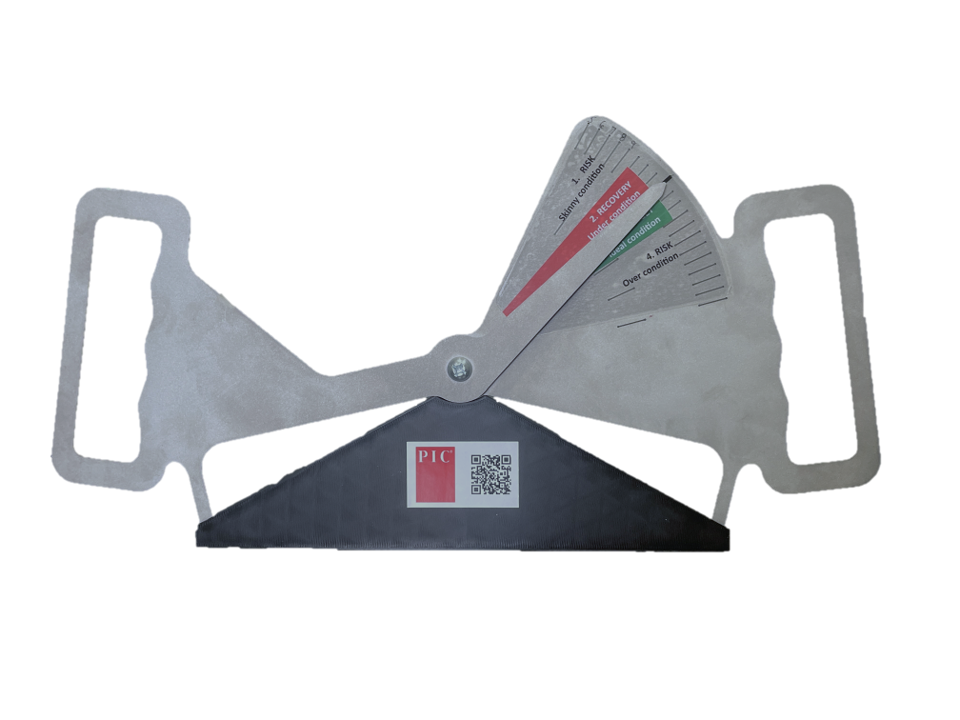
In the last 10 years, the U.S. swine industry has experienced a decrease in piglet survivability. Yet U.S. data shows the top 10% of sow farms are saving 6% more of their pre-weaned pigs on a consistent basis.1
What are these farms doing differently than others? They make piglet survivability a priority.
Prioritizing piglet care can be especially difficult when labor is tight. The PIC technical services team has compiled tips to help you achieve high-quality care of newborn piglets (Day 1 care) even with staffing limitations.
Two strategies that can have the biggest impact on piglet survivability are:
- Reducing the number of stillborn piglets
- Minimizing pre weaning mortality in pigs (PWM)
Strategy 1: Decrease the incidence of stillborn piglets
Decreasing stillborn rates by 1% could save you 40 cents per weaned pig or $12 per sow per year.2
Piglet survivability starts before farrowing. Make sure all farrowing room surfaces are clean and disinfected, including the mats, floors and ceilings. Ensure fans, drinkers, feeders and heat sources, including mats and heat lamps, are clean and functioning properly. Always use hot water when cleaning and be sure the room is dry before loading in sows.
“I recently visited a farm with farrowing rooms that appeared to be clean,” says Brie Quick, Technical Services Manager at PIC North America. “When we looked more closely, we discovered the bulbs in the heat lamps were dirty. That made it impossible for the heat lamps to function properly.”
Another potential risk factor to piglet survivability is the length of farrowing. PIC data shows the rate of stillborn piglets increases when farrowing continues for more than 5 hours.
One way to reduce farrowing time is to choose the right people from your team to work in the farrowing house. The ideal individual pays close attention to the actively farrowing sow and consistently returns to check on the sow every 20-30 minutes.
Rotate breaks to ensure an employee is in the farrowing house as often as possible. Make sure tasks that need fewer people are being staffed accordingly so you can prioritize farrowing coverage.
Strategy 2: Decrease pre weaning mortality in pigs

When labor is short, your best bet is to focus on your small but viable piglets – those weighing between 2 and 3 lb. Larger piglets are more capable of finding teats and nursing without help.
If you have the capacity to dry piglets, use drying powder, paper towels or a hand towel. If time won’t allow you to dry every piglet, focus on drying and marking the small but viable piglets and placing the others on or under the heat source.
Colostrum intake is also important for all pigs. However, the survival of small pigs is highly dependent on them consuming the right amount of colostrum. Therefore, focus on helping the small but viable piglets start nursing. Complete udder training within 30 minutes of birth and again 60 minutes after birth.
PIC research trials show that drying piglets and udder training can reduce PWM. Results showed the total reduction in PWM was 38% over the first three days post-farrowing. Drying and udder training piglets reduced PWM by 53% on day one, meaning up to 19% of your reduction in PWM can happen on day one by drying and facilitating colostrum intake.
Keep the following facts in mind when considering how much colostrum is available for each pig.
- Older sows produce more colostrum than younger ones.
- After 24 hours, the benefits of colostrum are no longer available to the piglet.
- The gap in mortality rates between light and heavy pigs is reduced when small pigs consume more than 250 ml of colostrum.
- Previous research found that piglets consume about 40 ml less colostrum for every additional piglet born.2
Choosing between multiple priorities can feel impossible, but you can be confident in your choices when they are based on data. By reducing the number of stillborn piglets and minimizing pre weaning mortality, you can improve piglet survivability across your operation.
“If you focus on day 1 piglet care, you can shorten farrowing times, facilitate colostrum intake, and support piglet warmth and well-being,” says Quick. “These tasks reduce pre weaning mortality in piglets and set piglets up for success.”
Looking for more strategies to improve day 1 piglet care? Listen to this episode of The Squeal podcast for recommendations on measuring day 1 care key performance indicators.
1 Ketchum, Ron. 2021. “Trends of U.S. Swine Survivability” International Conference on Pig Survivability.
2 Devillers et al., 2005






